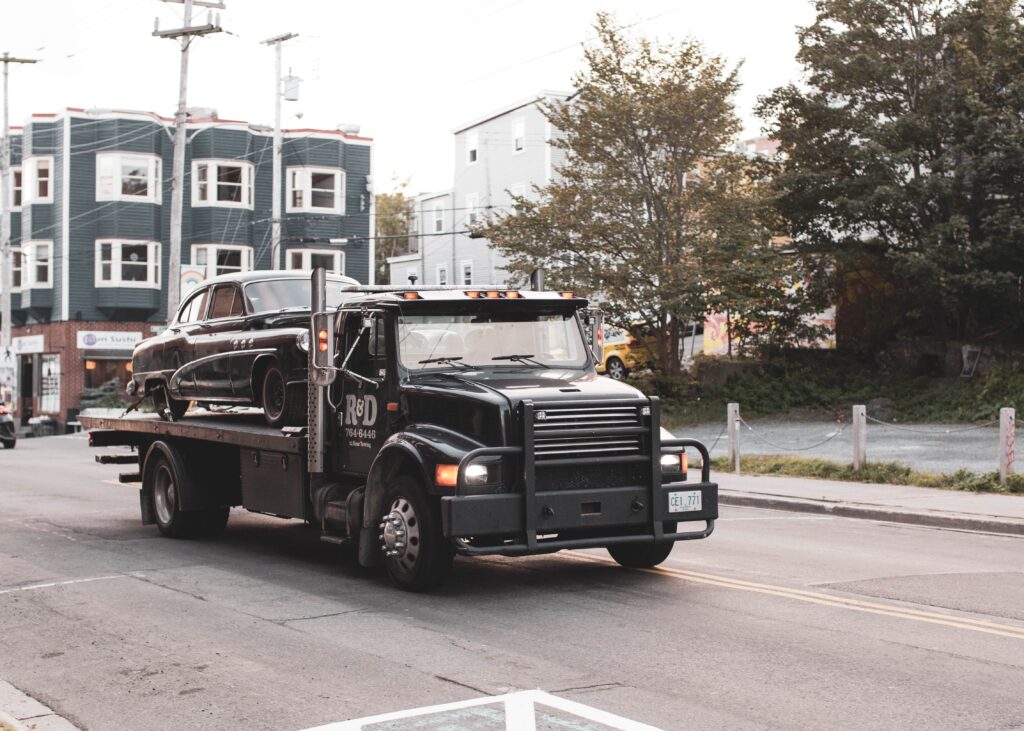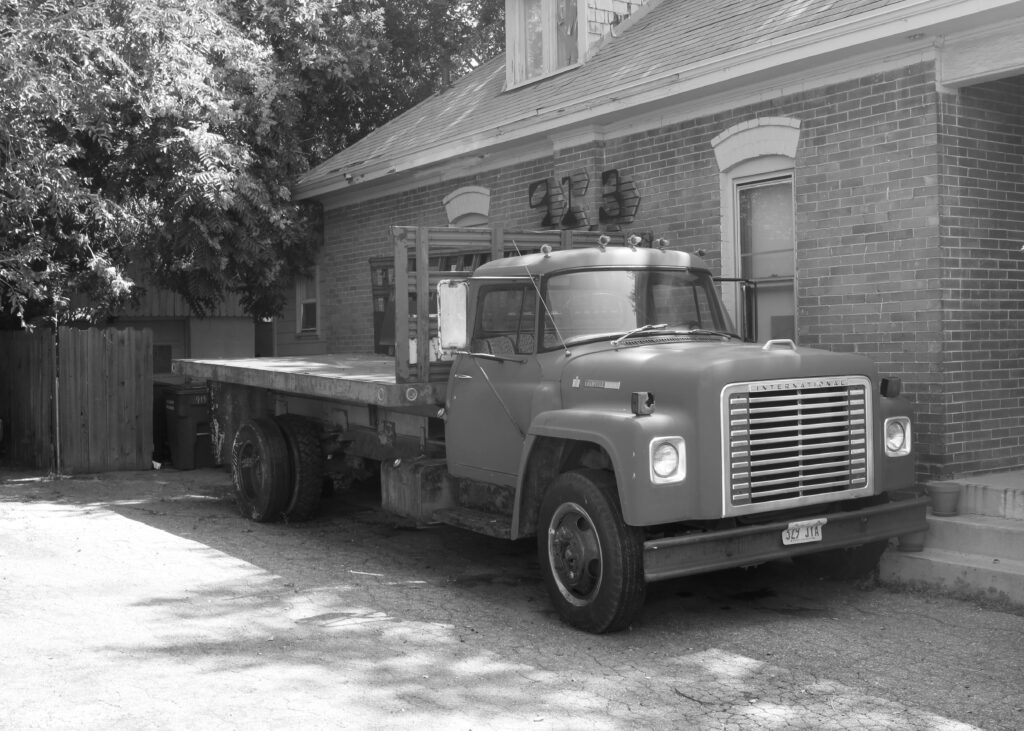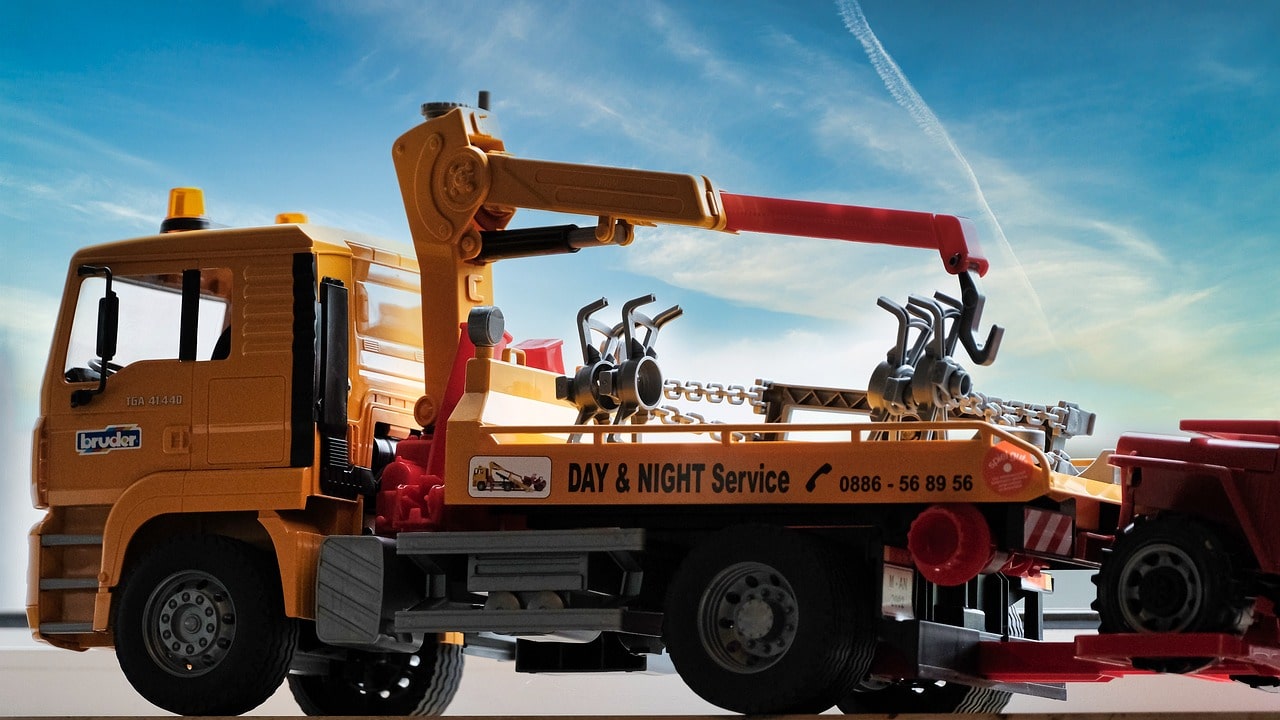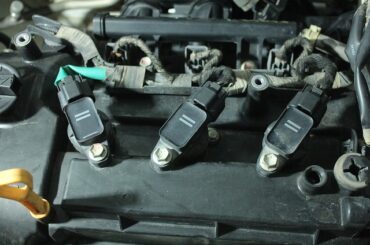Tow trucks, the unsung heroes of our roadways, provide a crucial lifeline for stranded motorists and efficiently clear the aftermath of accidents. When vehicles break down or get involved in collisions, these specialized vehicles come to the rescue, transporting the disabled or improperly parked cars to safety. Have you ever wondered about the inner workings of these mighty machines? In this article, we will delve into the fascinating world of tow trucks and uncover the secrets behind their operations. From the various types of tow trucks and their unique towing mechanisms to the critical role of hydraulics and safety considerations, let’s explore how these powerful vehicles work to keep our roads safe and moving smoothly.

Contents
Types of Tow Trucks
Tow trucks come in various configurations, each tailored to handle specific towing needs efficiently. Understanding the different types of tow trucks and their distinct towing mechanisms is essential for selecting the right vehicle for the job. Let’s take a closer look at the main varieties of tow trucks and their common use cases:
1. Hook and Chain Tow Trucks:
- Towing Mechanism: Hook and chain tow trucks are one of the oldest and most traditional types. They use heavy chains attached to the disabled vehicle’s frame or axle to lift the front or rear end off the ground.
- Use Cases: These tow trucks are suitable for transporting older or severely damaged vehicles that cannot be driven, as the chains prevent any further harm to the vehicle during transport. However, they are less commonly used nowadays due to the potential for vehicle damage.
2. Wheel-Lift Tow Trucks:
- Towing Mechanism: Wheel-lift tow trucks feature a hydraulic metal yoke or an arm with a specialized attachment. The yoke fits under the front or rear wheels of the vehicle, lifting them off the ground while keeping the opposite wheels on the road.
- Use Cases: Wheel-lift tow trucks are versatile and widely used for towing vehicles with two-wheel drive and moderate damage. They offer a more secure and less damaging towing option compared to hook-and-chain tow trucks.
3. Flatbed Tow Trucks:
- Towing Mechanism: Flatbed tow trucks are equipped with a flat, open bed at the back, which can be inclined hydraulically to form a ramp. The entire disabled vehicle can be driven or pulled onto the flatbed for transport.
- Use Cases: These tow trucks are highly popular for transporting luxury cars, all-wheel-drive vehicles, and cars with extensive damage. The flatbed design ensures that the entire vehicle remains off the ground, reducing the risk of further damage during transportation.

Towing Mechanism
Tow trucks employ various towing mechanisms to lift and transport disabled or improperly parked vehicles. Each method has its strengths and weaknesses, making them suitable for different towing scenarios. Let’s take an in-depth look at the three main towing mechanisms used by tow trucks: Hook and Chain, Wheel-Lift, and Flatbed, along with their respective pros and cons.
1. Hook and Chain Towing:
Description: Hook and chain towing is one of the oldest and most traditional methods. It involves using heavy chains that are wrapped around the front or rear axle or the frame of the disabled vehicle. The chains are then connected to the tow truck’s boom, allowing the truck to lift the vehicle off the ground by its front or rear end.
Pros:
- Versatility: Hook and chain towing can accommodate a wide range of vehicles, including those with severe damage or missing wheels.
- Cost-Effectiveness: This towing method is often less expensive compared to other alternatives.
Cons:
- Potential for Damage: The chains used in this method can cause scratches, dents, or other damage to the vehicle’s body.
- Limited Use Cases: Hook and chain towing is less commonly used nowadays due to the potential for additional damage to the vehicle during transport.
2. Wheel-Lift Towing:
Description: Wheel-lift towing utilizes a hydraulic metal yoke or arm that fits under the front or rear wheels of the disabled vehicle. The yoke lifts the wheels off the ground while keeping the opposite wheels on the road, allowing the tow truck to tow the vehicle safely.
Pros:
- Versatility: Wheel-lift towing is suitable for a wide variety of vehicles, including those with front or rear-wheel drive.
- Reduced Damage Risk: Compared to hook and chain towing, wheel-lift towing is less likely to cause damage to the vehicle’s body.
Cons:
- Limited to Two-Wheel Drive: This method is not suitable for vehicles with all-wheel or four-wheel drive, as lifting only two wheels off the ground can cause damage to the drivetrain.
- Limited Ground Clearance: Vehicles with low ground clearance may face difficulties during the loading process.
3. Flatbed Towing:
Description: Flatbed towing is considered one of the safest towing methods. These tow trucks are equipped with a flat, open bed at the back that can be inclined hydraulically to form a ramp. The disabled vehicle is then driven or pulled onto the flatbed for transportation.
Pros:
- Safe and Secure: Flatbed towing keeps the entire disabled vehicle off the ground, minimizing the risk of further damage during transport.
- Versatility: This method can accommodate a wide range of vehicles, including luxury cars, all-wheel-drive vehicles, and those with extensive damage.
Cons:
- Higher Cost: Flatbed towing may be more expensive than other methods due to the additional equipment and safety measures involved.
- Additional Space Requirements: Flatbed tow trucks require more space to load and unload vehicles, which might be a concern in tight or congested areas.
Controls and Hydraulics
Role of Hydraulics in Tow Truck Operations:
Hydraulics play a vital role in the efficient and precise functioning of tow trucks. These hydraulic systems provide the necessary power to lift and manipulate heavy loads, such as disabled vehicles, with relative ease. The main components involved in tow truck hydraulics are hydraulic pumps, cylinders, and control valves.
When the driver operates the controls inside the tow truck’s cabin, hydraulic fluid is pressurized by the hydraulic pump, creating a force that drives the cylinders. These cylinders are responsible for executing various tasks, such as lifting and lowering the towing mechanisms, extending the booms, or tilting the flatbed.
How the Driver Manages Hydraulic Systems:
Tow truck drivers have a range of control options within the truck’s cabin, enabling them to manipulate the hydraulics effectively. These controls are typically in the form of levers, buttons, or switches, each serving a specific function. The driver’s understanding of the hydraulic controls is essential for safe and precise handling during towing operations.
For instance, in a flatbed tow truck, the driver can operate the hydraulic controls to adjust the incline of the flatbed ramp. When towing a vehicle using the wheel-lift method, the driver can control the hydraulic arm or yoke to lift the front or rear wheels of the disabled vehicle off the ground.
Hydraulic Controls for Adjusting Lifting Mechanisms:
The different types of tow trucks have specific hydraulic controls tailored to their respective lifting mechanisms. Here’s how the hydraulic controls work for each major towing method:
- Hook and Chain Towing: In this method, hydraulic controls are used to operate the boom, which raises and lowers the hook and chain assembly. The driver can adjust the height of the boom and the length of the chains to secure the disabled vehicle properly.
- Wheel-Lift Towing: For wheel-lift tow trucks, the hydraulic controls operate the metal yoke or arm that fits under the vehicle’s wheels. The driver can raise or lower the yoke to lift the wheels off the ground or place them back down for towing.
- Flatbed Towing: In flatbed tow trucks, hydraulic controls control the inclination of the flatbed. The driver can adjust the angle of the ramp to make loading and unloading the disabled vehicle easier and more efficient.
Proper training and expertise are crucial for tow truck drivers to handle these hydraulic controls effectively. With the right skill and understanding, tow truck operators can ensure the safe and smooth operation of their vehicles, providing reliable roadside assistance and recovery services for those in need.

Transportation and Safety Considerations
Navigating Traffic and Obstacles during Transport:
Transporting disabled vehicles from one location to another can be a challenging task, especially when navigating through traffic and encountering various obstacles on the road. Tow truck drivers are trained to handle these situations with caution and expertise to ensure the safety of both the tow truck’s occupants and other road users.
During transport, tow truck operators remain vigilant and maintain a safe distance from other vehicles. They use hazard lights and warning signals to alert nearby motorists about the towing operation. When passing through congested areas or roadworks, drivers adjust their speed accordingly and make use of traffic cones or signage to create a safe buffer zone around the tow truck.
Importance of Properly Securing the Disabled Vehicle:
Properly securing the disabled vehicle to the tow truck is of utmost importance to prevent accidents or damage during transportation. Tow truck operators use various methods to secure the disabled vehicle firmly, such as heavy-duty straps, chains, or wheel clamps. These restraints ensure that the vehicle remains stable and immobile throughout the journey, even during sudden braking or sharp turns.
Additionally, drivers consider the weight distribution and balance of the loaded vehicle to avoid putting excessive strain on the tow truck’s tires and suspension. Failing to secure the vehicle adequately can lead to dangerous situations, like the vehicle shifting or falling off the tow truck during transit, which poses risks to both the tow truck operator and other motorists on the road.
Safety Measures Taken by Tow Truck Operators:
Tow truck operators prioritize safety at all times and adhere to specific safety protocols to ensure smooth and incident-free towing operations. Some of the safety measures taken by tow truck operators include:
- Training and Certification: Tow truck drivers undergo extensive training and obtain the necessary certifications to operate their vehicles safely. They learn about towing techniques, proper vehicle loading, and how to handle emergency situations effectively.
- Protective Gear and High-Visibility Clothing: Tow truck operators wear high-visibility clothing, such as reflective vests, to make themselves easily visible to other drivers, especially during low-light conditions or inclement weather.
- Proper Equipment Inspection: Before every towing operation, tow truck operators meticulously inspect their equipment to ensure everything is in good working condition. This includes checking the towing mechanisms, hydraulics, and safety restraints.
- Communication and Signaling: Tow truck drivers use clear and precise communication to coordinate the loading, unloading, and transportation process. They also use appropriate hand signals and warning lights to alert other drivers of their intentions.
- Adherence to Traffic Laws: Tow truck operators strictly adhere to traffic laws and regulations while driving, including speed limits, proper signaling, and obeying traffic signals.
- Continuous Monitoring: Throughout the towing operation, tow truck drivers constantly monitor the disabled vehicle and the towing equipment to detect any issues promptly.
By following these safety measures, tow truck operators mitigate potential risks and ensure the safety of everyone involved in the towing process, creating a safer environment for both themselves and the motorists sharing the road.
So, How does a Tow Truck work?
In conclusion, tow trucks are indispensable for providing essential roadside assistance and recovery services. Understanding the different towing mechanisms, the role of hydraulics, and the emphasis on safety highlights their crucial role in ensuring road safety and efficiency. Tow truck operators’ expertise and dedication make them vital partners in keeping our roads safe and accessible to all. Their prompt response and professionalism deserve our appreciation as they help keep our roads clear and assist motorists in times of need.
Want to know about the three types of Towing? Read it here.






